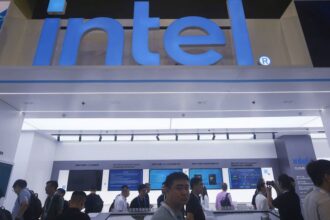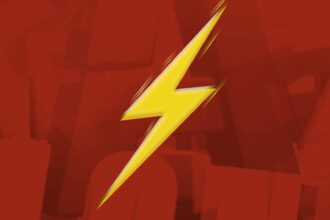Elevated interest rates and pricier listings have made it even harder to afford a new home. But there is an often-overlooked expense when buying a home: closing costs.
These costs, which are the fees owed on the day you finalize the purchase of a home, have risen in recent years. In 2022, the median cost of a loan paid by homebuyers — including origination fees, appraisal and credit report fees, title insurance, discount points and other fees — was $6,000, a nearly 22% increase from 2021, according to a report from the Consumer Financial Protection Bureau.
But the calculation for closing costs could soon change: A recent settlement by the National Association of Realtors set to take effect in July could potentially increase these costs for some homebuyers. At the same time, the Biden administration plans to take aim at so-called “junk fees” hidden in closing costs. In a recent report, the CFPB said it would work to “analyze mortgage closing costs, seek public input and, as necessary, issue rules and guidance to improve competition, choice, and affordability.”
Here’s what to know about closing costs:
Not every buyer pays the same amount in closing costs. The final bill depends on several factors, including which state you live in, taxes, the type of mortgage loan you take out and the overall cost of the home you are buying.
Closing costs can include an application fee to process your loan request, home appraisal fees that determine how much the property is worth, a credit reporting fee, title insurance (which protects the buyer from defective property titles) and an origination fee (the price you pay for getting the loan in the first place).
Some states require an attorney at closing, which adds to the overall bill.
Some lenders roll closing costs into the total mortgage, increasing payments over time.
New York, Delaware and Washington, DC, have the highest average closing costs, according to Bankrate; while Missouri, Indiana and North Dakota have the lowest.
“They typically can be 3% to 4% of the amount of the loan,” Jeff Ostrowski, who covers housing at Bankrate, said of closing costs nationwide. “So if you’re borrowing $400,000, you’re talking about an extra $12,000 to $15,000.”
Ostrowski said that while existing homebuyers already know the drill when it comes to closing costs, some first-time homebuyers may forget to factor them in when saving for a home.
“For first-time buyers who are really stretching to qualify, it can be something to worry about,” Ostrowski said. “Generally, the loan officer you’re working with knows that and they’re going to factor that in to your approval process.”
Historically, homebuyers haven’t had to pay their realtors’ fees themselves. However, last month, a federal judge gave the green light to the NAR settlement, paving the way for potential changes to the current real estate business model.
Under the terms of the settlement, sellers’ agents will no longer be required to offer commissions to buyers’ agents. This means homebuyers may have to pay their Realtor’s commission themselves, adding to the overall cost at closing.
Brian Connolly, an assistant professor of business law at the University of Michigan, said it’s too soon to predict how the NAR settlement may affect closing costs.
“It’s not really all that clear what’s going to happen with broker commissions after the NAR settlement goes into effect this summer,” Connolly said, predicting the status quo may remain even after the settlement takes effect. “At least initially, we’re likely to see the percentage commission system continue.”
As part of the broader Biden administration effort to crack down on junk fees, the CFPB said it was looking into ways to reduce costs for homebuyers.
Closing costs are “too often full of junk fees,” the bureau said.
Fees for credit reports were one example given by the CFPB. Homebuyers pay a fee for mortgage lenders to pull their credit reports from the three major credit reporting companies: Equifax, TransUnion and Experian. Those costs have recently spiked by 25% or as much as 400%, according to the CFPB. (Consumers can check their credit scores for free every 12 months at AnnualCreditReport.com).
“These steep increases in a market that lacks competition and choice warrant further scrutiny,” the report said.
While it’s a good start, tackling junk fees doesn’t get to the heart of the home affordability crisis, Connolly said.
“The fact that we’re heavily under-supplied on housing, we’re dealing with labor shortages in home construction and we’re dealing with continued high prices for raw materials — these are the bigger structure issues in the market and it seems like this is just working around the edges for a much bigger issue,” he said.
There is one relatively simple way to lower your overall closing costs: shop around.
According to Freddie Mac, a significant percentage of people don’t compare rates from multiple lenders, though it could save homebuyers thousands of dollars. For example, in late 2022, borrowers could save as much as $600 annually by getting one additional rate quote and an average of more than $1,200 annually by getting at least four rate quotes, according to data compiled by Freddie Mac.
“Borrowers who received as many as five rate quotes during the second half of 2022 could have potentially saved more than $6,000 over the life of the loan, assuming the loan remains active for at least five years,” Genaro Villa, an economist at Freddie Mac, said in a statement.
And even if more than one lender pulls your credit score, it won’t hurt your credit, as long as it’s done within a 45-day window, according to the CFPB.
“You should get at least three mortgage offers,” Ostrowski said. “When you compare those offers, examine not just the rate itself but also the closing costs. There can be some variation, and if it’s significant, you obviously would want to choose the lender that gives you the best deal.”
Read the full article here










